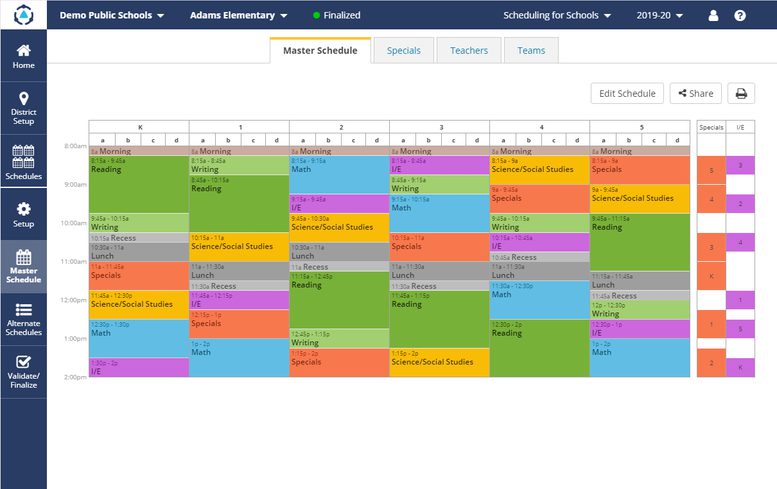4 steps you can take now to yield better outcomes
In a recent elementary principal survey conducted by District Management Group, the majority of principals responded that they start their school schedule in April or later, but there are many benefits to starting earlier.
Percentage of respondents starting their schedule by quarter.
Here are 4 actions you can take now to help you jump start your scheduling process and achieve better outcomes:
1. Start with a clearly defined scheduling process
Who will be involved? What is the timeline for draft and final schedules? Who will you get input from? Establishing a clearly defined process and articulating roles and responsibilities can ensure an inclusive process incorporating the appropriate inputs to make scheduling a means to achieving your priorities.
“Schedules can either get in the way or serve to advance our goals. For us, it is a way to clearly express how we will prioritize instruction to advance student achievement”
~Kelly Sanders, Principal, Farmington Public Schools.
2. Go on a data finding mission
Good decision making starts with good information. Start collecting the data you will need to inform your next schedule.
- Conduct a staff survey to find out what’s working and what could be improved in the current schedule.
- Use student growth data to identify the programs and practices that yield results, and those you may need to revise or phase out. Will you need to increase literacy time, or interventions? Is there an achievement gap you want to address?
- Are you planning new initiatives or safety measures that will need to be built into the schedule?
3. Make it fun! Organize scheduling parties.
As a principal, you don’t have to go it alone. Create a cross-functional scheduling committee to help gather data and set goals for the next schedule. Work together to draft and refine the schedule. This will help the team align on priorities and trade-offs, and increase buy-in. Bring cookies or snacks — it’s a party!
4. Infuse best practice and expertise
Scheduling is complex, and the tools most principals use for scheduling are generally highly inadequate for the job. In our recent survey of elementary principals around the country, very few indicated using dedicated scheduling applications — in fact, the majority of respondents just use a combination of paper and Excel! This makes the job of scheduling much more difficult and time-consuming, and generally results in less efficient schedules. Take advantage of the best practices and the best tools available. It benefits staff charged with building schedules, and benefits students!
Percentage of respondents by tools used (some used multiple tools)
Our Solution
In our work at DMGroup, after years of helping districts build best practice schedules using spreadsheets, we decided there had to be a better way…..so we built cloud-based software DMSchedules. As the product manager and designer for DMSchedules, my focus has been to create a systemic approach to scheduling, leveraging everything we had learned about best practices, and designing a workflow that would facilitate continuous improvement, communication, and collaboration. DMSchedules makes scheduling faster and easier, embeds best practice, and provides the ability to create and evaluate multiple scenarios, and automatically generate and share dependent staff schedules.
DMSchedules has already helped hundreds of schools around the country to adopt best practices in scheduling and increase student achievement.
Learn more about how our software DMSchedules can help you at dmschedules.com, or contact me and our scheduling experts at scheduling@dmgroupk12.com

About DMSchedules
Create Better School and Staff Schedules Now with DMGroup’s DMSchedules Scheduling Software
Learn more

